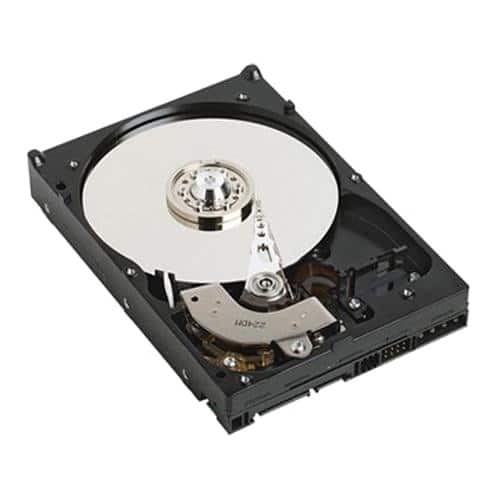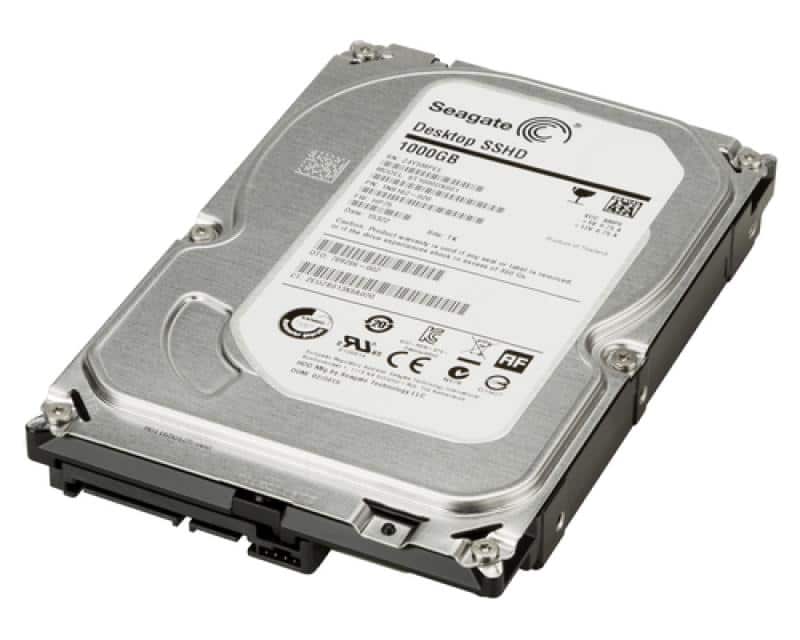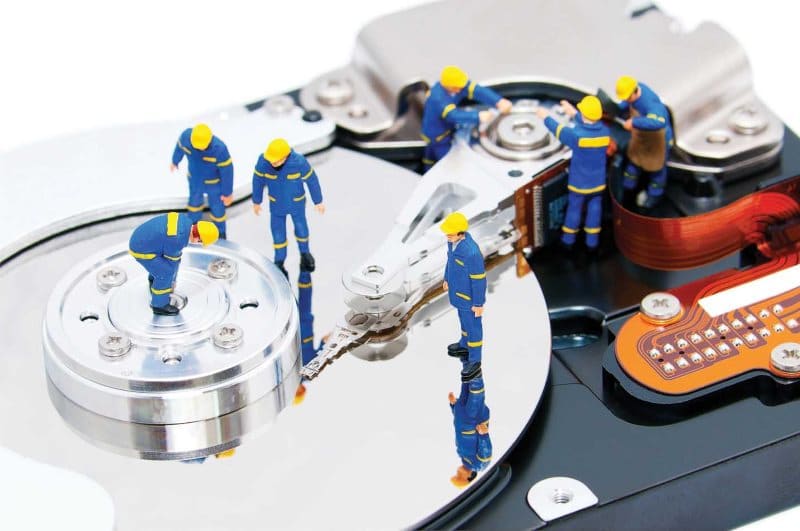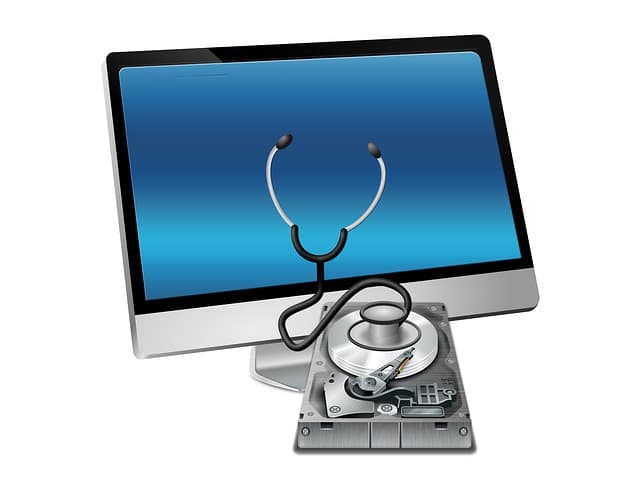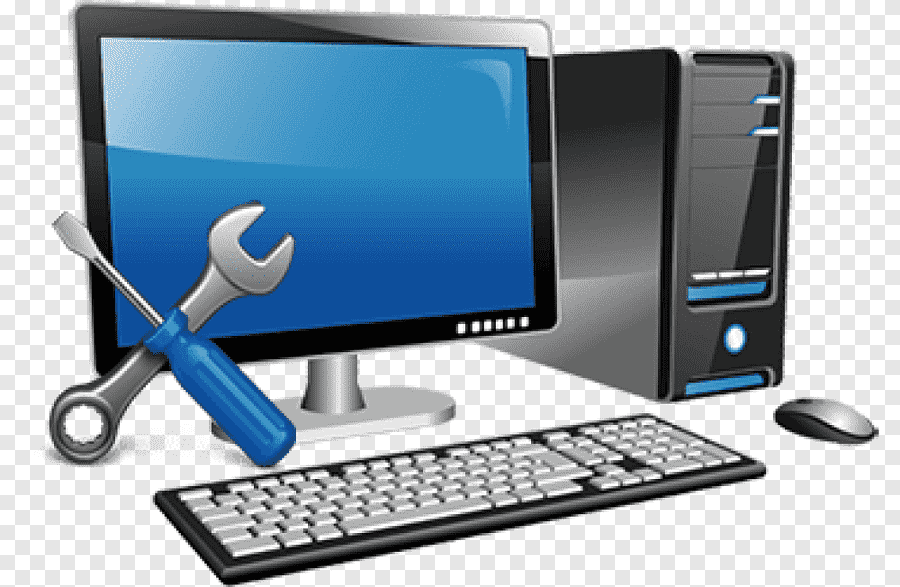The world of computing for many is a bit complex and impossible to understand, however it is very interesting and today many people are interested in learning about issues related to this whole environment, which is why today we will talk about what MBR is, how is its function, what it can be used for and much more.
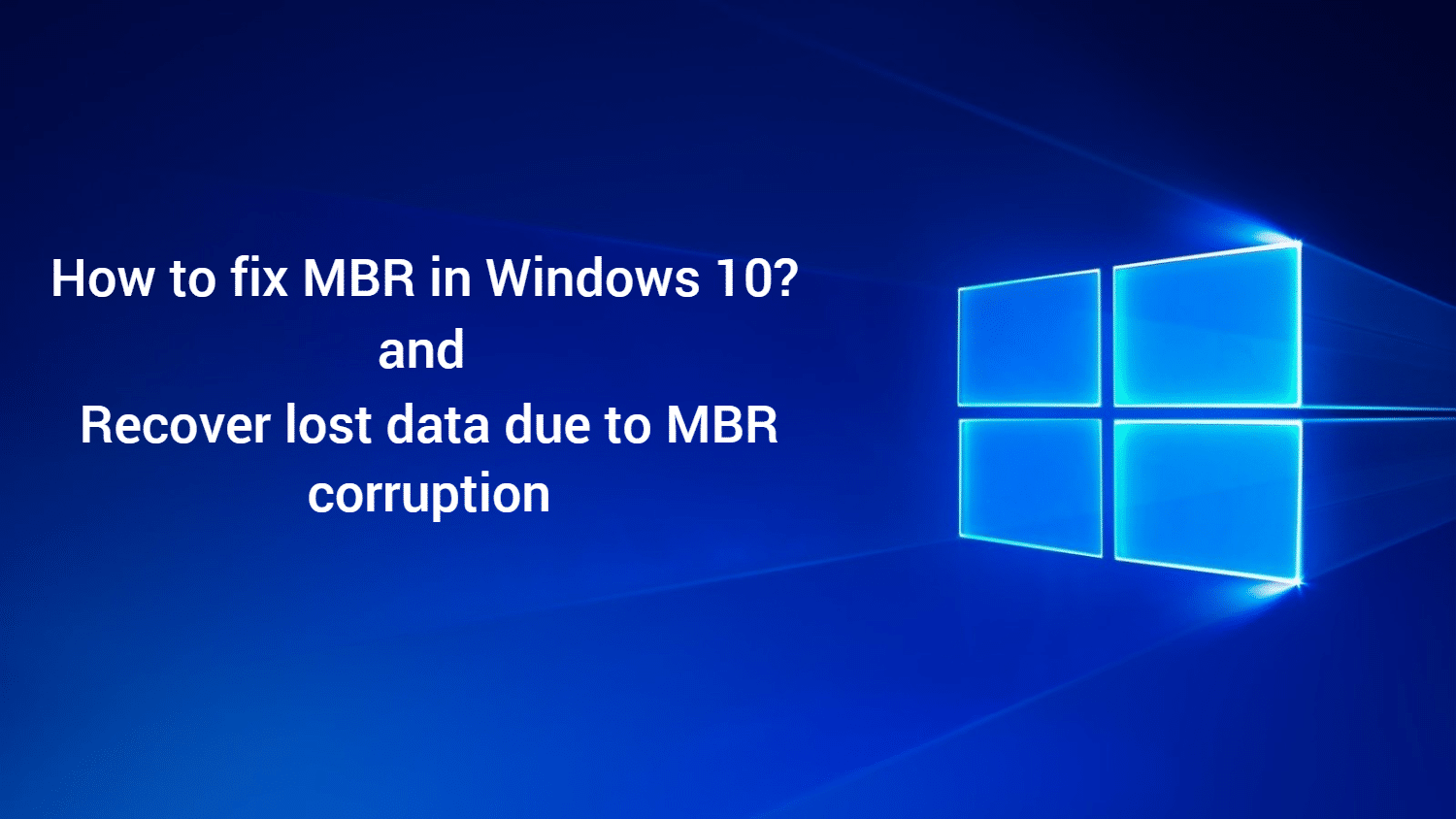
What is MBR?
The main boot record or as the master boot record (MBR) is commonly known in English would be Master Boot Record, it is defined as a sector of the hard disk which is responsible for identifying where the active partition may be on it, for another party is also the one who executes said action at the moment the program for the boot sector of that partition is started.
Within this sector, it is possible to identify where the operating system is located and in this way the start information can be enabled, which will be in charge of the main storage or the computer's RAM. Included in the master boot record is a table in which each partition can be identified, as well as a number of partitions that can be viewed on the hard drive.
It is important to keep in mind that when booting directly from the hard drive, the BIOS is immediately activated and makes a copy of the entire content of the MBR in an address that will always be fixed within memory so that it is can give you full control. This code generally boots automatically into the operating system either from the hard drive, from a Boot-Loader or loader.
Function
Once a computer is turned on and the BIOS is expected to run within the hardware checks so that it can detect what the boot medium is, then the first sector of the hard drive will be loaded, and thus the MBR, they have a table of partitions or divisions of the hard disk but also with a small program which is in charge of indicating how the operating system is being loaded.
All boot managers on the market have the ability to support the selection of operating systems to follow since they are located in this sector, however in the case of MBR it is responsible for searching where the partition is located indicated and how it can be activated within the boot sector.
Modular
If observed from a practical point of view, basically the MBR focuses on the 512-byte boot sector or the sector partition, it occurs in computers when they are fully compatible, they are IBM. On the other hand, this type of MBR is widely used on clone computers, it is used so frequently that the new cross-platform standards for partitioning and booting are also incorporated into other types of computers.
At the beginning of the decade of the 80s in the world of computing great changes or revolutions were experienced thanks to the launch of the first IBM PC since in a short time it managed to reach an architecture standard that was fully compatible, and in this way the various computers that were manufactured turned out to be compatible with each other. All this circumstance was totally relevant for the development of personal computing.
The IBM company manufactured a computer that was made up of an open architecture so that the rest of the companies or computer manufacturers could build theirs using the same architecture, of course, but always having full control over the IBM thanks to its own BIOS . At the beginning of the XNUMXs, the sale of loose PC components began to increase considerably and in this way what is known today as the Clone Computer was born.
If it is the case that a data storage device is divided into logical units to store information by means of a partition table scheme of the MBR, it will be composed of the primary entries of the same, on the other hand the partition entries are stored in the extended partition log records are labeled in the BSD disk and Logical Disk Manager metadata partitions, since they are fully represented by those primary partition entries.
Understanding the startup process of your computer
At the moment the button is pressed to turn on the computer, the process is executed by means of which the operating system is loaded in its memory, from the first moment all this execution will depend on the partition structure of the HDD.
It should be mentioned that there are two types of partition structure which are; MBR and GPT however the partition structure is made up of three specific drives:
- The data structure on the disk.
- The code used during startup, if the partition is bootable.
- And from where a partition starts and where it ends.
The MBR boot process
It should be borne in mind that if a computer system uses an MBR partition structure, when starting the execution process, the necessary BIOS will be loaded (it is understood by the (Basic Input/Output System) composes the bootloader firmware.
Low-level functions such as read from keyboard, enter to watch video, perform disk input/output, and code to load a first-stage bootloader are located in the bootloader firmware. All this is done before the BIOS manages to detect which is the boot system and in this way it is also possible to follow the sequence of system configuration functions that starts with the following:
- Power on self test.
- Detecting and initializing the video card.
- BIOS boot screen display.
- Performing a brief memory (RAM) test.
- Configure plug and play devices
- Identifying the boot device.
One that the BIOS already manages to detect which is the boot device which is running, proceeds to read the first block of the disk of the device that is located in its memory, this first block is the MBR and has a size of 512 bytes respectively, which contain three elements which must enter this space, these elements are the following:
- First bootloader (440 bytes)
- Disk partition table (16 bytes per partition X 4), MBR supports only four partitions.
- Disk signatures (4 bytes)
Once this stage is reached, the MBR is because the partition table has been scanned but also the volume boot record (VBR) is loaded into RAM.
The VBR is characterized by being an initial program loader (IPL) which is a code through which the boot process is started, generally this initial program loader is made up of a boot loader during its second stage followed by This will load the system operation.
Within the systems derived from Winona NT as well as in Windows XP, the IPL is performed at any time of the start of the process, since first of all the program known as NT Loader must be loaded so that after that it can be start with the execution of the operating system.
GPT boot process
At the moment that the boot process is carried out with a GPT partition structure, the following is achieved: The GPT uses a Unified Extensible Firmware Interface (UEFI) to avoid the MBR process and thus increase the storage in the file manager. start during the first stage of the process.
The extensible firmware interface that is unified within the system is usually much more advanced than the system that makes up the BiOS, since through it the file system can be analyzed, including loading files on its own.
For this reason, when the machine is turned on, the first thing that acts is the UEFI so that the configuration functions of the computer system can be carried out, such as: power management, configuration dates and other configuration components. system management, just like in the BIOS.
Once the UEFI already reads the GPT GUID (Globally Unique IDentifier) partition table, it can already be said that the process is already within the first blocks of a unit to be more specific just after block 0, which still has MBR for Legacy BIOS.
The GPT is in charge of defining the partition tables of a disk whose loader is booted from the EFI (Extensible Firmware Interface) everything that somehow identifies the EFI system partition. It is important to note that every system partition has bootloaders for the different systems installed on other partitions on the hard drive. The boot manager or also known as bootloader, is the one in charge of starting a system such as windows boot manager, so that the operating system can be loaded later.
Advantages and disadvantages of MBR and GTP
An MBR disk only has the capacity to execute four primary partitions. For this reason, if many more partitions are required to be executed, such as a fourth partition, in order to carry out the extended partition, it must be done from the sub-partitions or logical units within it to achieve what you are looking for. In the MBR, 32-bit is usually used to register the partitions, since for each one of them they are usually restricted to a maximum size of 2 terabytes (TB) of storage.
Advantages
- Its great advantage is that this type of process is compatible with most systems, so there are no inconveniences there.
Disadvantages
- Only four partitions can be made respectively, but you also have the option to have more sub-partitions in the 4th partition.
- It has a partition size limit of a maximum of 2 terabytes (TB).
- The partition information that is generated is usually stored in a specific place which is the MBR, which is why if it becomes corrupted or an error occurs, the entire disk becomes totally unreadable for this reason.
GUID Partition Table (GPT) is considered as the latest standard for defining the partition structure of a hard drive. Since for all this the GUIDs or global unique identifiers are taken into account in order to describe the partition structure. The GTP is part of the UEFI standards, that is to say that it is based on a UEFI system and in this way it can only be installed on a disk that uses GPT, a clear example of this is the secure boot function in Windows 8.
By means of the GPT an unlimited number of partitions is created however in certain operating systems the partitions must be restricted to 128. On the other hand the GPT does not have a specific size limit of a participation.
Pros
- It is made up of an unlimited number of partitions, the limits that identify it are generated by an operating system, for example, Windows only allows 128 partitions.
- It does not have a limit in terms of partition size since it depends on the operating system at all times, its limit itself is much larger than any disk that has been made to date.
- The GPT saves a copy of the partition and also the boot data so you can recover them if they get damaged during the GPT main header.
- It can store the cyclic redundancy check values so that the integrity of all its data can be verified, if a case of corruption occurs, the GPT has the ability to detect problems and thus have the opportunity to recover the data. corrupted data, from another location on the drive.
Cons
- Its great disadvantage is that under no circumstances can it be used on old operating systems since they are totally incompatible and for this reason the processes cannot be carried out.
Steps to find out if a disk has a GPT or MBR partition table
The best way to verify the partition type of any hard drive that is connected to a Windows computer is by using disk management. That is why to start with all these disk management sections, a series of steps must be followed, which are:
Disk management
- The best thing to do is use the Windows-R key shortcut to open the run box.
- After opening it, you must write the word msc and after that you must proceed to press the enter key.
- When this step has been carried out, Windows proceeds to scan the hard drives, and a pop-up window will be displayed after a certain time has elapsed, it will be possible to verify the type of partition of the disks, all click with the right button on the Disk tile, which is located in the lower half of the interface. Be very careful that you should only right-click on Disk 1, Disk 2, etc. and not on the partitions.
- To continue, you must select the properties option within the menu that will be displayed, followed by a properties window for the disk that was selected. Once it is finished you should switch to the volume tab and in this way display the value of the Partition style below the disk information in the pop-up window.
Command line
Another way to achieve this is through the use of the command line. This process has various advantages that can be implemented in this method to be able to check the disk, and the main one would be that it can be done much faster since it can be enumerated. all disks and partition style directly.
Let's see the step by step below:
- The first thing to do is press the Windows key followed by typing exe while holding down the Ctrl + Shift keys at the same time pressing the enter key.
- Followed by this, you must confirm the UAC request that opens, doing so will display an elevated command prompt window.
- After that you must write diskpart and press
- Followed by that type list disk and press Enter again.
Once all the indicated steps have been carried out, it can be said that the GPT column has been checked, where it will be possible to see if a particular disk is MBR or GPT. By means of this, it can be determined if an asterisk (*) is observed in the column, it means that a disk is using GPT, if on the contrary it does not have it, then it uses the MBR.
Instructions to convert from MBR to GPT and vice versa
There may be a case where you need to convert the partition structure of the Disk at the time an error message is thrown when trying to install Windows to the disk, a more common example is “Windows cannot be installed or the selected disk is of the style of GPT or MBR partition.
It is important to keep in mind that this entire process that is going to be carried out will erase all the data on the hard drive, which is why if you do not want to be able to do so, you must make a backup of them or you can also choose to pass the information to another format.
To convert from MBR to GPT
- The first thing to do is to insert the Windows installation media this media can be the USB flash drive or DVD.
- The computer must be turned on in UEFI mode.
- Selecting the type of installation you want is more secure and personalized.
- Click on all the partitions of the unit and followed by selecting delete, at the moment that a message is reflected on the screen that says; “Where do you want to install Windows?”
- To continue after deleting the drive a single area of unallocated space will be displayed.
- You must select the space that was assigned and click on next, in this way windows will detect if the computer has already started in UEFI automatically, it will reformat the unit using the GPT disk format and then convert. Installation starts after that.
To convert from GPT to MBR
- Shut down the computer and then insert the Windows media can be a USB flash drive or DVD
- Boot the computer to the DVD or USB flash drive in BIOS mode.
- Select the type of custom installation.
- Once you see the message on the screen: "Where do you want to install Windows?". All partitions on the drive should be selected and then deleted.
- When the deletion process is done, the drive will show a single area of unallocated space. That is why you must select the space that is not yet assigned and click on next. Windows will detect that the computer was started in BIOS mode and will automatically reformat the drive using the MBR disk format therefore converting it. The installation will start after doing that.
If this article What is MBR? everything you need to know. If you found it interesting, be sure to read the following, which may also be to your total liking:
- Photocells: what it is, how they work and much more
- All About information systems in companies
